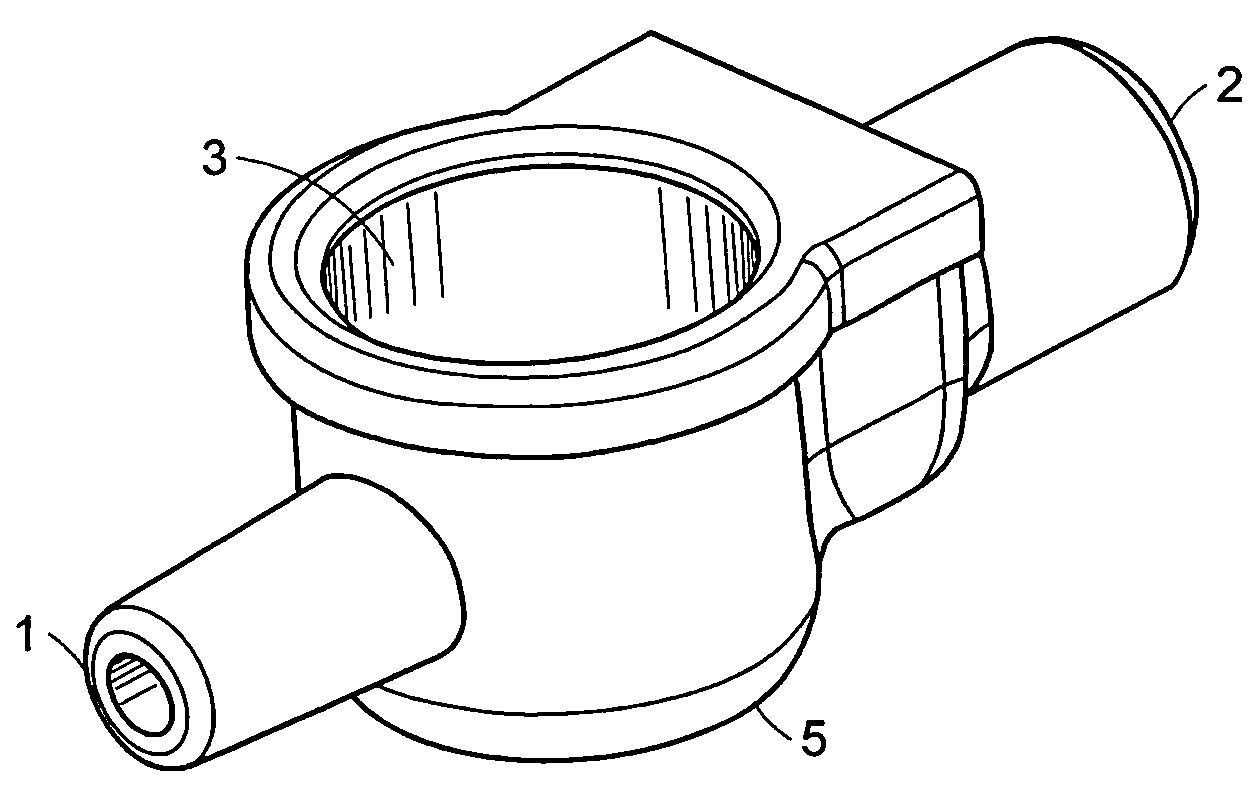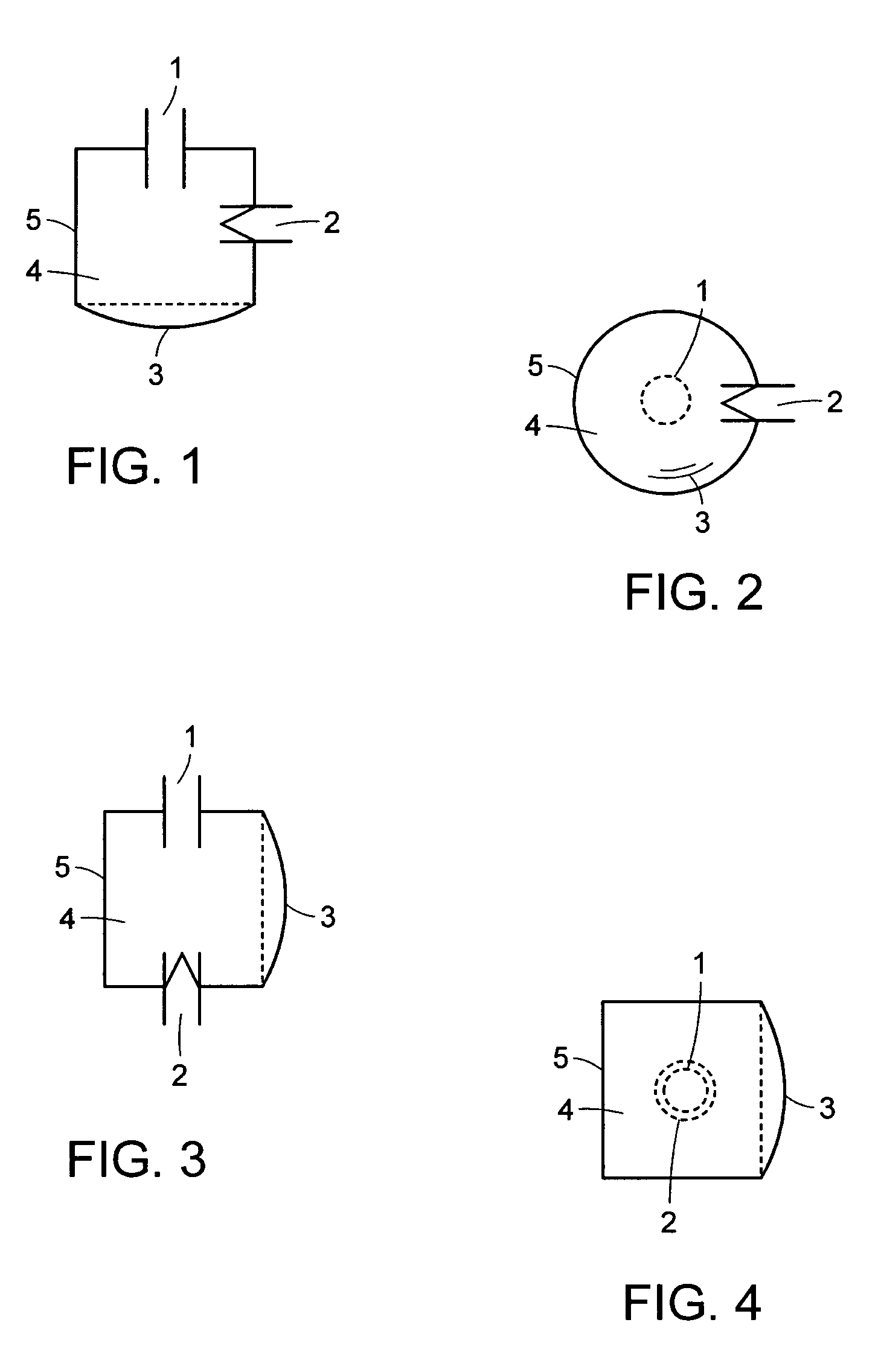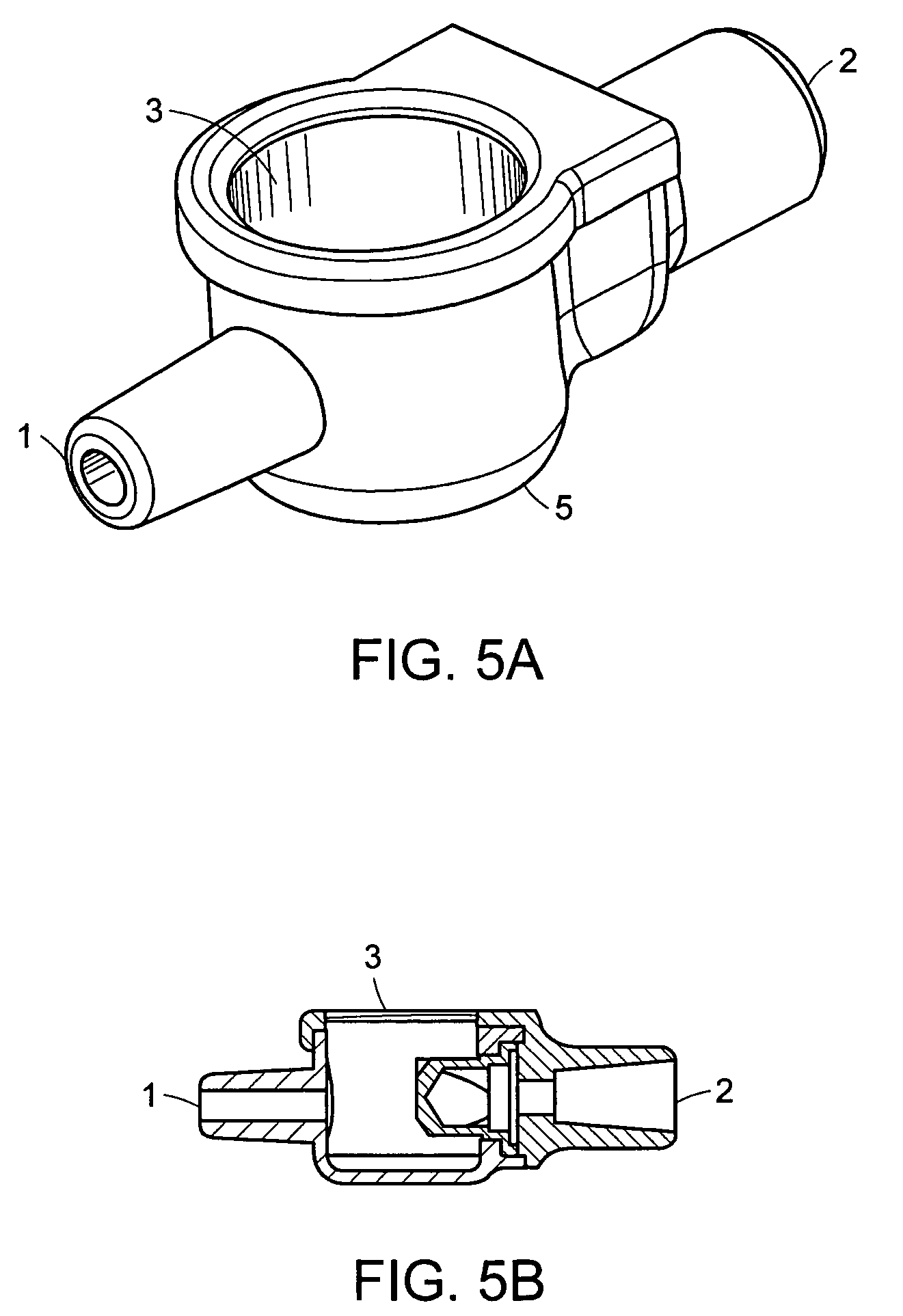Device for the identification of the epidural space
a technology for epidural space and devices, applied in the direction of suction devices, intravenous devices, trocars, etc., can solve the problems of increasing the complication rate of trainees, difficulty or complications, and increasing the difficulty of trainees
- Summary
- Abstract
- Description
- Claims
- Application Information
AI Technical Summary
Benefits of technology
Problems solved by technology
Method used
Image
Examples
Embodiment Construction
[0004]The invention generally relates to an injection device that aids injection into an epidural space. This device allows a user to identify and clearly visualise when a needle enters the epidural space or cavity.
[0005]Devices according to the invention include a diaphragm that is adapted for pressurization. The diaphragm bulges outwards when the device is pressurized. Also, the device is adapted to connect to a needle. In some embodiments, the device is device is pressurized with air or saline. Also in some embodiments, the device includes an injection port for injection of pressurizing fluid.
[0006]In some embodiments, the device incorporates a connection port for connecting to a needle. In some embodiments, a needle is an epidural needle. Devices according to the invention can be used in medicine.
[0007]The invention also includes methods of injection into a body cavity of a patient, which has an internal pressure less than atmospheric pressure, that include the steps of: attachi...
PUM
 Login to View More
Login to View More Abstract
Description
Claims
Application Information
 Login to View More
Login to View More - R&D
- Intellectual Property
- Life Sciences
- Materials
- Tech Scout
- Unparalleled Data Quality
- Higher Quality Content
- 60% Fewer Hallucinations
Browse by: Latest US Patents, China's latest patents, Technical Efficacy Thesaurus, Application Domain, Technology Topic, Popular Technical Reports.
© 2025 PatSnap. All rights reserved.Legal|Privacy policy|Modern Slavery Act Transparency Statement|Sitemap|About US| Contact US: help@patsnap.com



